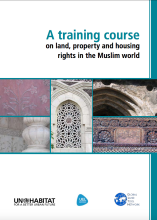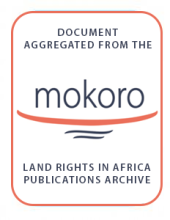Land Library Search
Through our robust search engine, you can search for any item of the over 73,000 highly curated resources in the Land Library.
If you would like to find an overview of what is possible, feel free to peruse the Search Guide.
/ library resources
Showing items 1 through 9 of 20.This training course from the Global Land Tool Network is part of the Network’s activities on Islamic dimensions of land. In most Muslim countries, Islamic law, principles and practices make an important contribution to shaping access to land.
Tribal land management constitutes the largest of the three main tenure types that prevail in Botswana (tribal, State, and freehold). The land inventory is a means to support land administration, land development, land use planning, land transactions and natural resources management in Botswana.
This publication provides an overview of some the most important land-related environmental and climate change problems that the world is facing. land, Environment and climate change offers an overview of the relationship between land tenure, land management approaches and the environment.
The Second Working Group of the Intergovernmental Panel on Climate Change (IPCC 2007) and other scientific bodies present the case that climate change profoundly shapes ecological, social, and economic interactions.
The purpose of the present Act is the economic and expedient use of the soil; the protection and care of the environment and, in particular the conservation or reinstatement of the sustainable purity of the air, water and soil, as well as the avoidance of noise; the conservation or reinstatement
A series of short articles on land deals in West Africa: plenty of information, yet reliable data is scarce; abundant land?; complexity of land tenure systems; local perceptions; are win-win partnerships possible?; a call for international guidelines; regional responses.
Almost all societies acknowledge the concept of state or public landownership in which property rights are vested in a public body on a national, regional or community level. State and public land tenure arrangements define rules for the distribution, use and protection of publicly vested lands.
This paper focuses on the analysis of the right to food from an indigenous peoples’ perspective and addresses the main issues of concern to indigenous peoples that crosscut the right to food.
Cuando en el año 2000 se aprobaron los Objetivos de Desarrollo del Milenio (ODM), la comunidad internacional contrajo un compromiso sin precedentes para satisfacer las necesidades de los pobres del mundo y salvaguardarlos de las amenazas del siglo XXI2.







